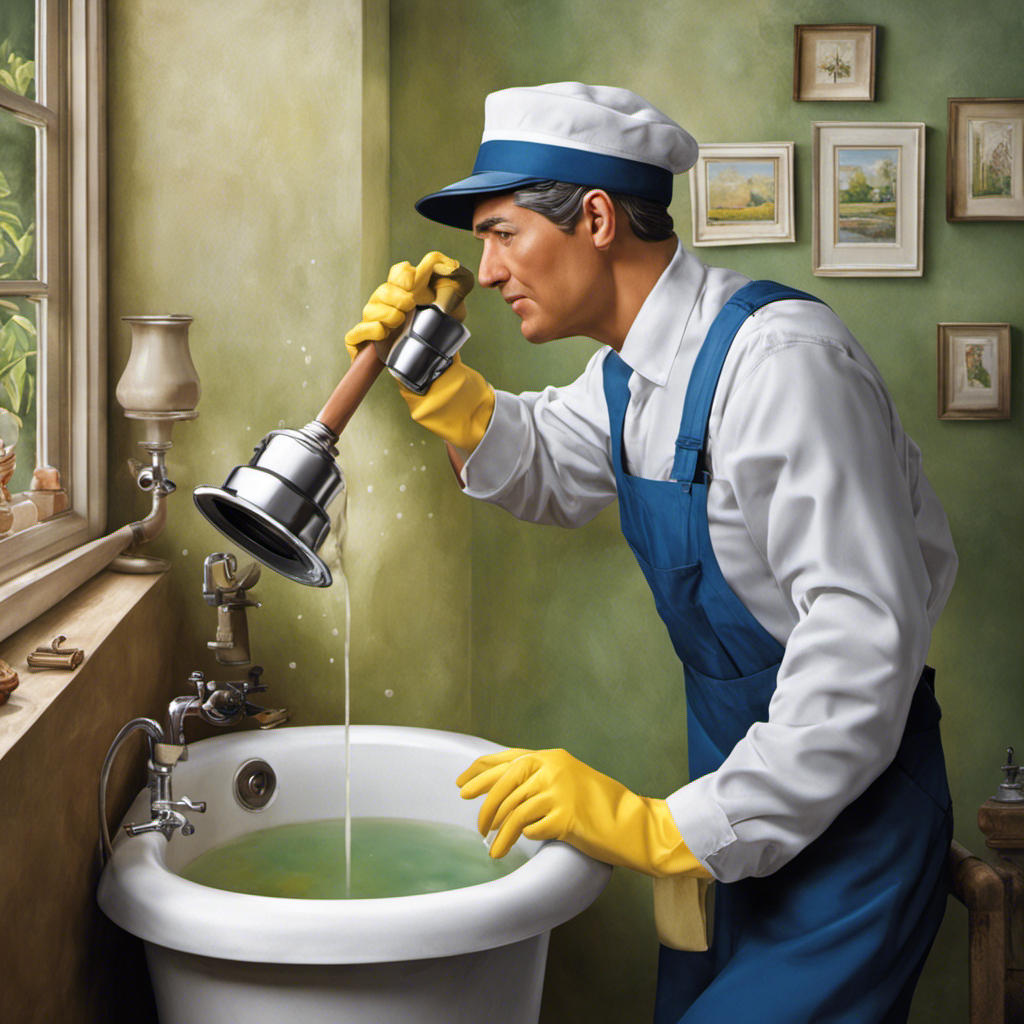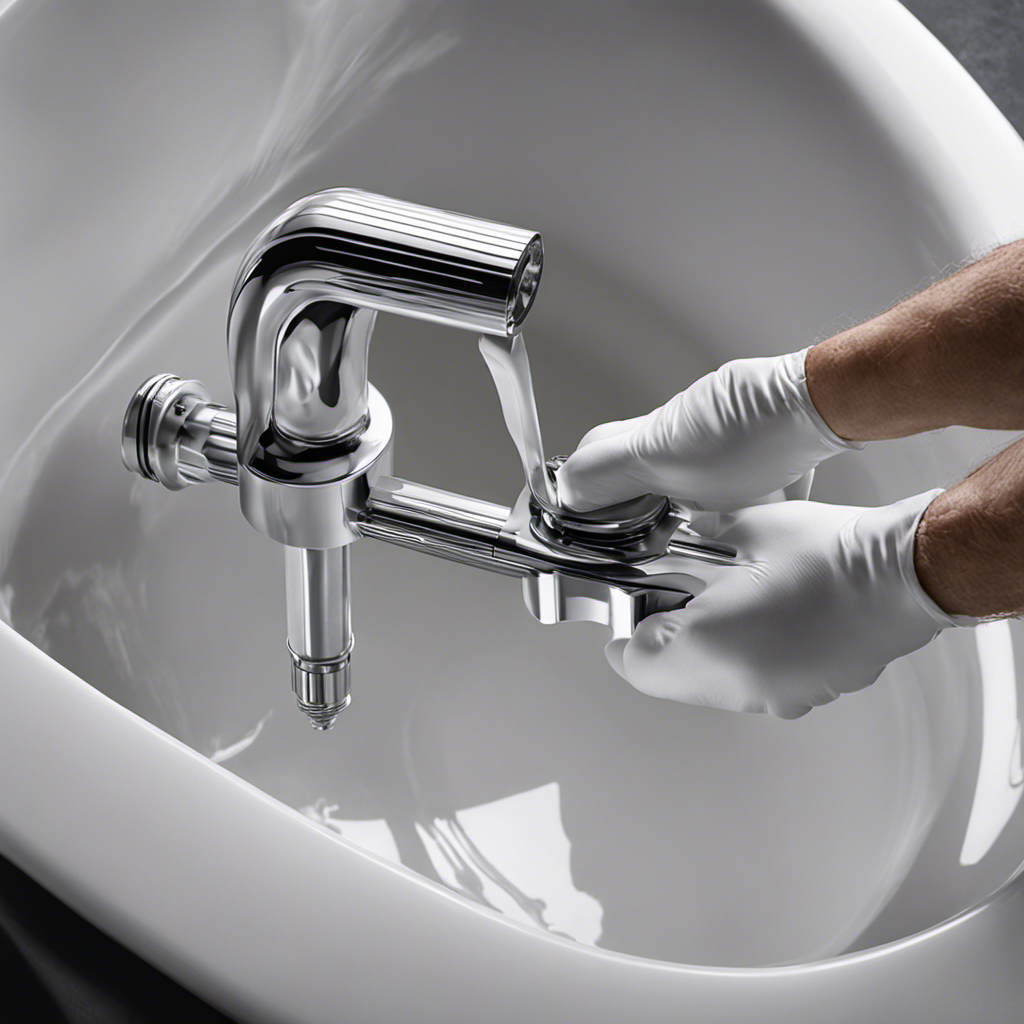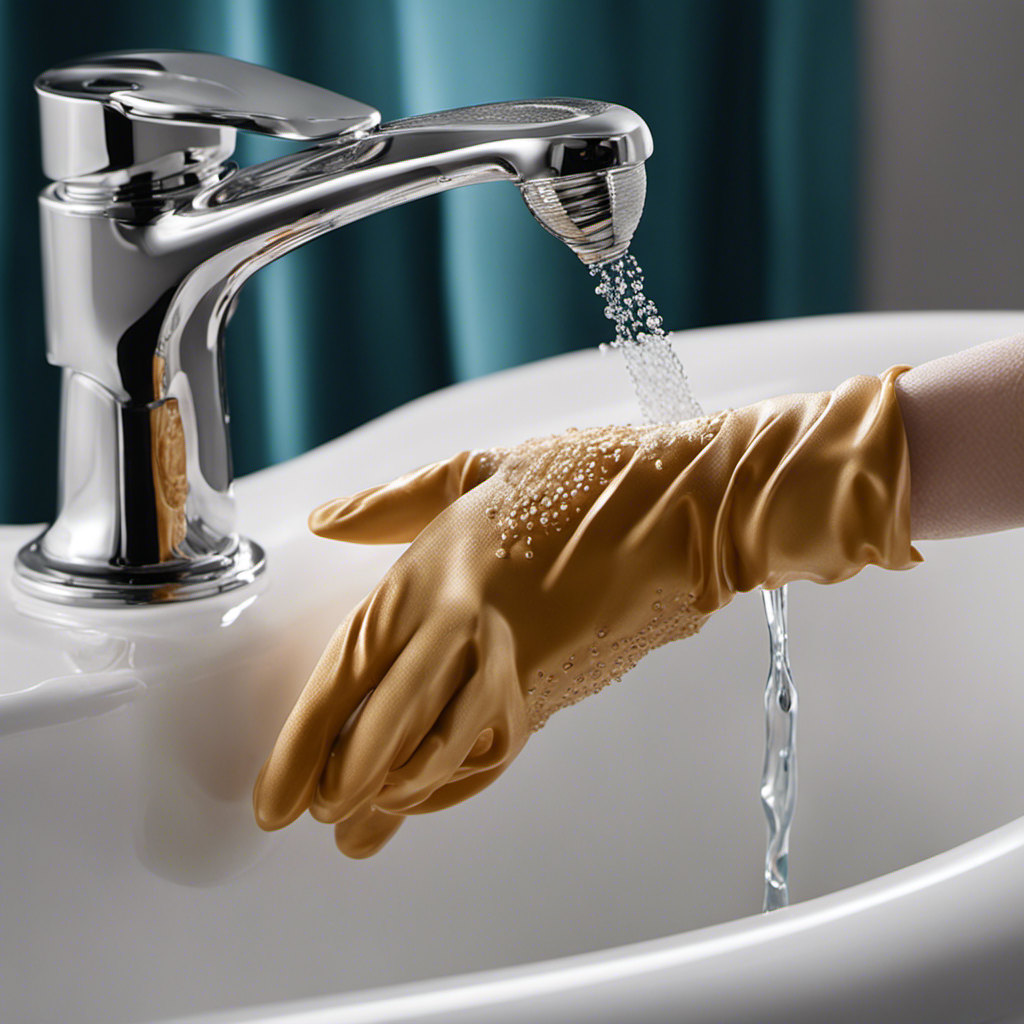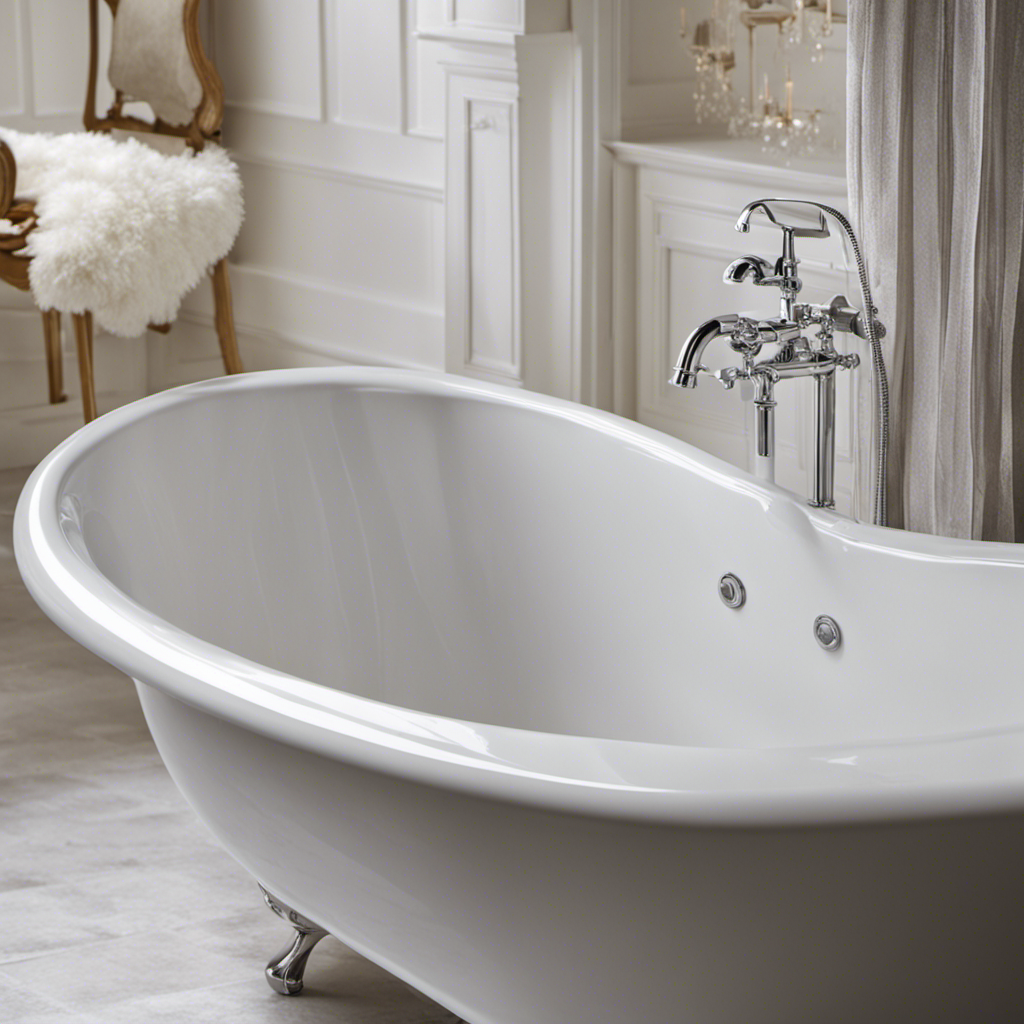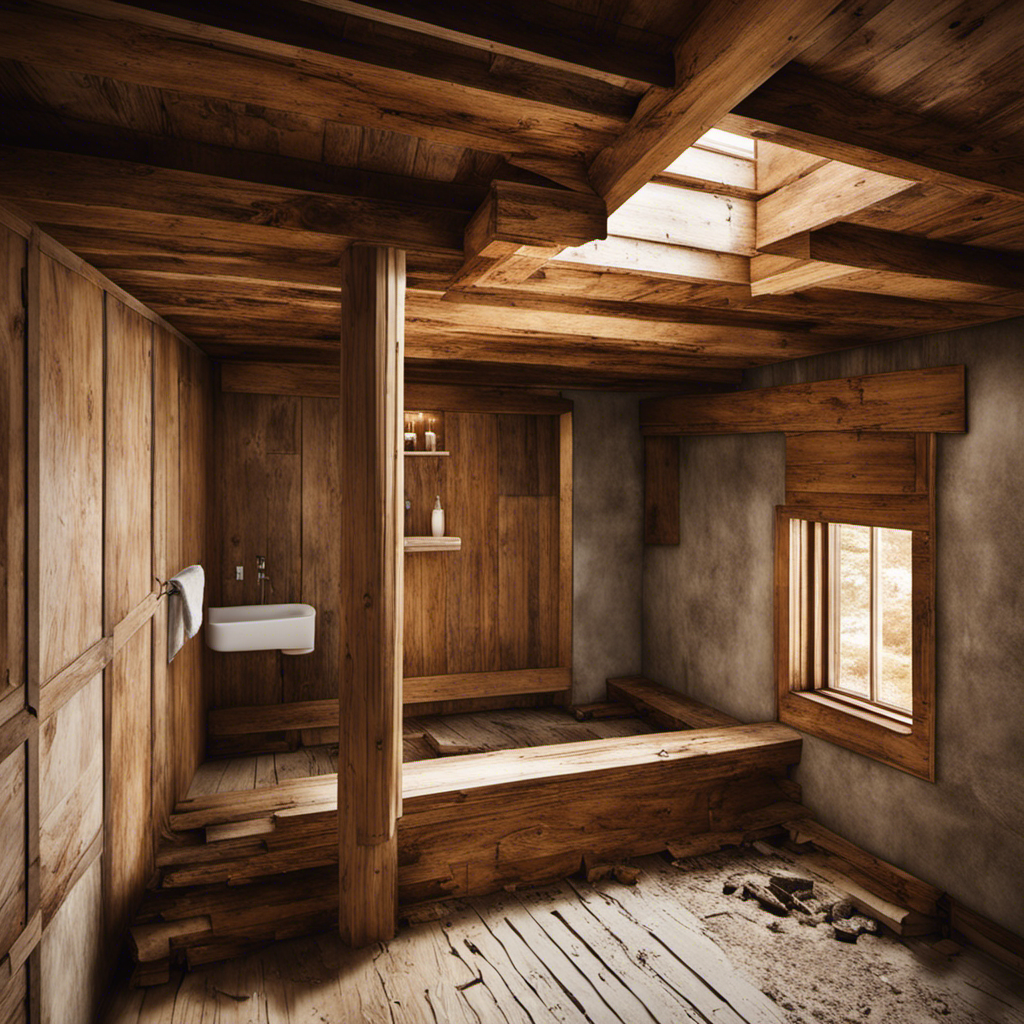As I stood there, ankle-deep in murky water, frustration welled up inside me. It was time to take matters into my own hands and declog my bathtub.
In this article, I’ll share with you the tools you’ll need, how to identify the cause of the clog, and natural methods to unclog your bathtub.
I’ll also provide tips on using chemical drain cleaners safely and when it’s best to call a professional plumber.
Get ready to say goodbye to those stubborn blockages and hello to a smoothly flowing bathtub drain.
Key Takeaways
- It is important to have the necessary tools, such as a plunger and drain snake, to effectively unclog a bathtub.
- Identifying the cause of the clog, such as hair or soap residue, is crucial in determining the most appropriate method for unclogging the bathtub.
- Natural methods, such as using baking soda and vinegar, can be effective and safe solutions for unclogging a bathtub.
- If DIY methods are not successful or if there are multiple drains affected or recurring clogs, it is advisable to call a professional plumber to avoid further damage and ensure proper functioning of the bathtub.
Tools You Will Need
To declog your bathtub, you’ll need a plunger and a drain snake. These essential tools are readily available and will help you clear the clog efficiently.
The plunger creates suction, which dislodges the blockage. Make sure to cover the overflow drain with a wet cloth to create a seal and plunge vigorously.
If the plunger doesn’t do the trick, it’s time to use a drain snake. A drain snake is a flexible tool that can reach deep into the pipes to remove stubborn clogs. Insert the snake into the drain and rotate it while pushing it further. Once you feel resistance, twist and pull back to grab the clog.
Remember to clean the tools thoroughly after use to prevent future clogs.
Identifying the Cause of the Clog
You can easily identify the cause of the clog by checking the drain cover and using a flashlight to look for any debris. Common clogging materials include hair, soap residue, and mineral deposits.
If you notice that water is draining slowly or not at all, it is a sign of a serious clog. Another sign is a foul odor coming from the drain. It is important to address the clog as soon as possible to prevent further damage and inconvenience.
In the next section, I will provide you with natural methods to unclog the bathtub. These methods are effective and safe for your pipes, and they can help you get your bathtub back in working order in no time.
Natural Methods to Unclog the Bathtub
Using household ingredients like baking soda and vinegar can be an effective and safe way to unclog your bathtub. These eco-friendly solutions not only clear the clog but also prevent future blockages.
To start, mix 1/2 cup of baking soda with 1/2 cup of vinegar. Pour the mixture down the drain and let it sit for 15 minutes. The chemical reaction between the baking soda and vinegar will break down the clog.
Next, pour hot water down the drain to flush away the debris. For preventive measures, regularly remove hair and debris from the drain using a drain catcher or screen. Also, avoid pouring grease and oil down the drain, as they can solidify and cause blockages.
Now, let’s explore how to use chemical drain cleaners safely in the next section.
Using Chemical Drain Cleaners Safely
Mixing baking soda and vinegar is an effective and safe method for unclogging drains. However, there may be times when natural methods are not strong enough to clear stubborn clogs. In such cases, chemical drain cleaners can be used.
When using chemical drain cleaners, it is important to take safety precautions. Always wear gloves and goggles to protect your skin and eyes from any potential splashes or spills. Additionally, make sure to work in a well-ventilated area to avoid inhaling any fumes.
While chemical drain cleaners can be highly effective in breaking down clogs, it is important to note that they contain harsh chemicals that can be harmful to both you and the environment. Therefore, it is advisable to use them sparingly and as a last resort.
When to call a professional plumber is when all attempts to unclog the bathtub have failed or if you are uncomfortable handling chemicals.
When to Call a Professional Plumber
If all your attempts to clear the stubborn clog have failed, it may be time to call a professional plumber. While it can be tempting to keep trying different DIY methods, sometimes a severe clog requires the expertise of a trained professional.
Here are some signs that indicate you may need to hire a plumber:
-
Multiple drains are affected: If you notice that multiple drains in your home, such as sinks and toilets, are clogged at the same time, it could be a sign of a more serious issue in your plumbing system.
-
Recurring clogs: If you constantly have to deal with clogs in your bathtub, even after trying various methods to clear them, it’s best to call a professional. This could indicate a deeper problem that needs to be addressed.
-
Foul odors or gurgling sounds: Strange smells or gurgling sounds coming from your drains could be a sign of a severe clog that needs professional attention.
While the cost of hiring a professional plumber may vary depending on the severity of the clog and your location, it is important to consider the potential damage that can be caused by ignoring the issue. A professional plumber will have the necessary tools and expertise to quickly and effectively clear the clog, ensuring the proper functioning of your bathtub and preventing any further damage to your plumbing system.
Conclusion
Well, congratulations! You have successfully learned how to declog your bathtub and save yourself from the murky depths of clog-induced despair.
Armed with the right tools, you can now tackle any clog with confidence. From identifying the cause to using natural methods or chemical drain cleaners, you are now the unclogging guru.
But remember, my dear reader, there may come a time when even your unclogging prowess is no match for a stubborn clog. When that day arrives, fear not, for the professional plumbers shall be your knights in shining armor, ready to rescue you from the clutches of plumbing nightmares.
So go forth, my dear reader, and may your bathtubs forever be clog-free!
